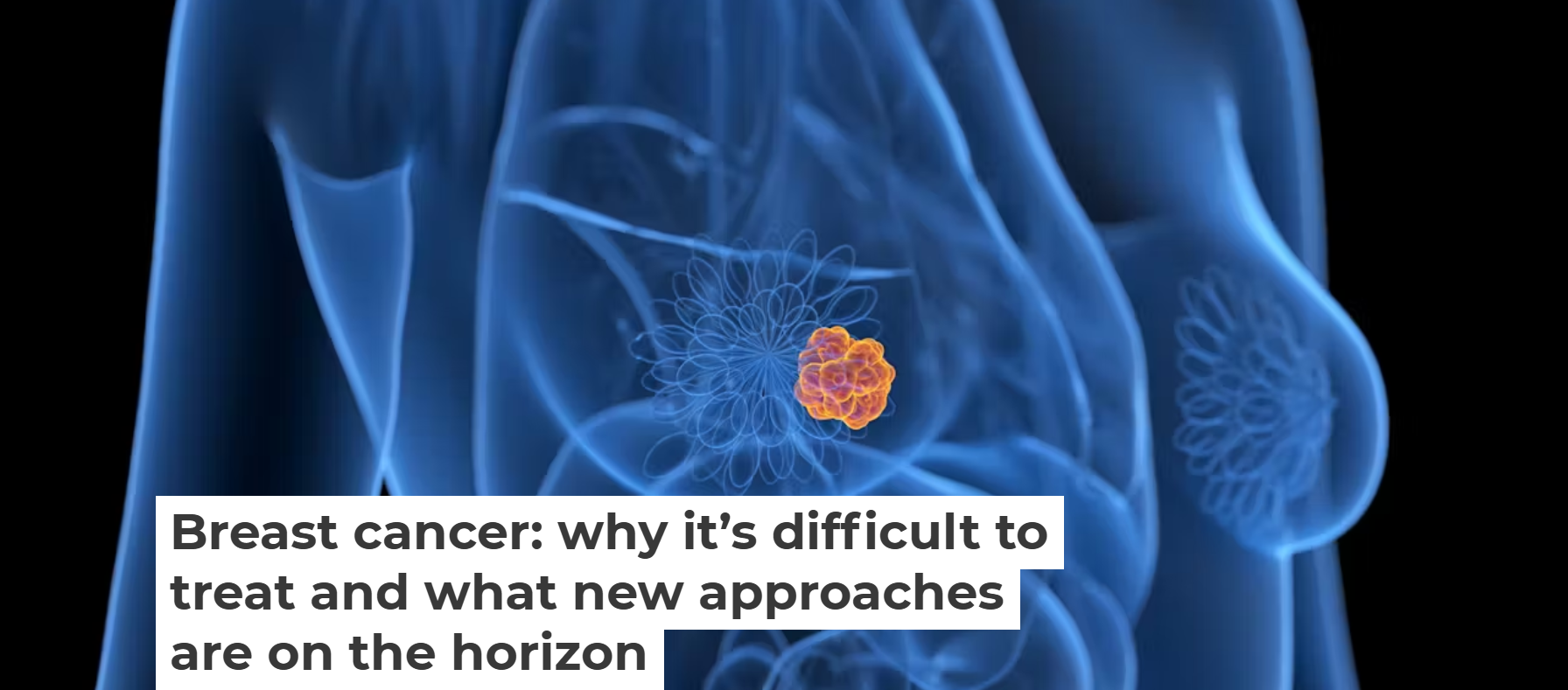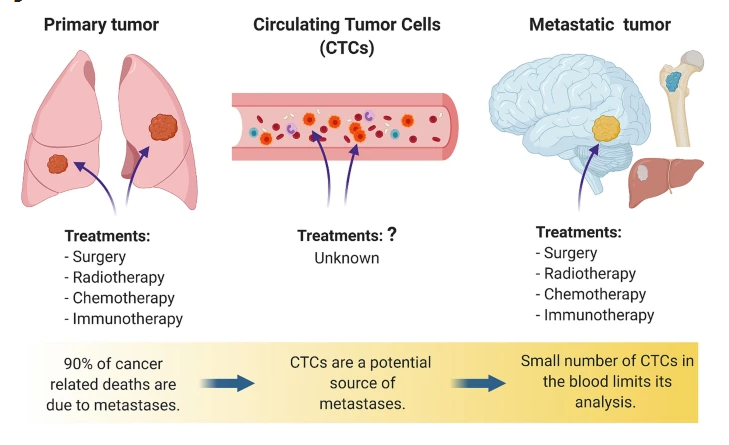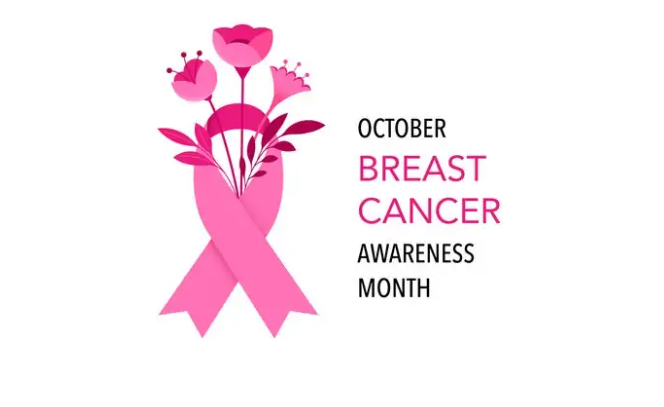Understanding Breast Cancer: Challenges, Tumour Types, and the Promise of Precision Medicine
Category : Breast | Sub Category : Breast Cancer Posted on 2025-07-09 23:04:51

Breast cancer remains the most common cancer affecting women
worldwide. In 2022 alone, over 2 million new cases were diagnosed globally.
Despite advancements in research and treatment, breast cancer continues to pose
significant challenges due to its complexity and variability.
What Causes Tumour Development?
In healthy tissue, the processes of cell growth, division,
and death are tightly regulated. However, when mutations occur in a cell’s DNA,
this regulation can break down. As a result, cells may begin to multiply
uncontrollably, leading to the formation of a tumour.
Tumours can be either benign (non-cancerous) or malignant
(cancerous). While benign tumours remain localized and generally pose less
risk, malignant tumours are more dangerous. They have the ability to invade
nearby tissues and spread (metastasize) to distant organs, such as the lungs,
liver, or bones.
Cancer cells possess unique capabilities that allow them to
survive and proliferate. These include evading the immune system, initiating
the formation of new blood vessels (angiogenesis), and adapting to harsh
conditions like low oxygen levels or the presence of anti-cancer drugs.
Interestingly, only about 5% to 10% of cancers result from
inherited (germline) mutations present from birth. The vast majority are linked
to environmental factors, lifestyle choices, and spontaneous mutations, making
many cancers potentially preventable through healthy living and regular
physical activity.
Types of Breast Cancer Tumours
Breast cancer is not a single disease. It encompasses
several subtypes, each with distinct biological characteristics and treatment
responses. Key classifications include:
- Ductal
Carcinoma In Situ (DCIS): A non-invasive form of breast cancer where
abnormal cells are confined to the milk ducts and have not spread to
surrounding tissue.
- Invasive
Ductal Carcinoma (IDC): The most prevalent type, where cancer cells
have breached the duct walls and invaded nearby breast tissue.
- Invasive
Lobular Carcinoma (ILC): Begins in the milk-producing lobules and
infiltrates surrounding breast tissue. Lobules differ anatomically from
ducts, which transport milk to the nipple.
- Triple-Negative
Breast Cancer (TNBC): Lacks estrogen receptors, progesterone
receptors, and HER2 protein. This subtype tends to be more aggressive and
harder to treat due to the absence of common therapeutic targets.
- HER2-Positive
Breast Cancer: Characterized by overexpression of the HER2 protein,
which drives rapid cancer cell growth. HER2-targeted therapies can be
effective for this subtype.
- Hormone Receptor-Positive Breast Cancer: Driven by hormones such as estrogen or progesterone. Hormone-blocking therapies are often effective for managing this form of cancer.
Why Is Breast Cancer Difficult to Treat?
The difficulty in treating breast cancer lies in its
biological diversity. Each subtype of breast cancer exhibits unique molecular
and genetic features, requiring tailored therapeutic strategies. A treatment
that works for one subtype may be completely ineffective for another.
Several key factors complicate treatment:
- Tumour
Microenvironment: Cancer cells manipulate nearby healthy cells to
support their growth and survival. These surrounding cells can form a
protective barrier, making it harder for drugs to reach the tumour
effectively.
- Drug
Resistance: Over time, breast cancer cells can evolve and become
resistant to therapies such as chemotherapy, hormonal therapy, or targeted
drugs. They may activate alternative signaling pathways or mutate further
to avoid destruction.
- Metastasis:
Once cancer spreads to other organs, treatment becomes significantly more
complex. Metastatic cancer cells may behave differently from those in the
original tumour, requiring new strategies for management.
5.Immune Evasion: Cancer cells can sometimes avoid detection by the immune system. In breast cancer, this is especially problematic because the disease often lacks sufficient genetic mutations to make the cancer cells “visible” to immune cells.
5.Variable Response to Immunotherapy: Although immunotherapy has shown promise in treating cancers like melanoma and lung cancer, it has limited effectiveness in breast cancer. This is partly due to the low number of mutations in breast cancer cells and their ability to suppress immune activity.
The Role of Precision Medicine in Breast Cancer Treatment
Precision medicine offers a promising path forward in breast
cancer care. This approach involves tailoring medical treatment to the
individual characteristics of each patient, including their genetic profile,
lifestyle, and the specific features of their tumour.
Key benefits of precision medicine include:
- Targeted
Therapies: Treatments can be developed to target specific mutations or
proteins present in a patient’s tumour, increasing effectiveness and
reducing unnecessary side effects.
- Adaptive
Treatment Plans: By using tools like liquid biopsies (e.g., blood
tests), clinicians can monitor how a tumour evolves during treatment and
adjust therapies accordingly.
- Early
Detection and Prevention: Genetic testing can identify individuals at
high risk, enabling earlier surveillance and potentially preventive
strategies.
Precision medicine has already transformed the treatment landscape for certain breast cancer patients, especially those with access to genetic profiling and advanced diagnostic tools. While affordability and access remain challenges, ongoing research and clinical trials are expanding the reach of these personalized therapies.
Breast cancer remains a leading health concern for women
worldwide due to its complexity and ability to resist conventional treatments.
However, advances in understanding tumour biology and the development of
precision medicine are creating new opportunities for more effective and
personalized care. Continued investment in research, early detection, and
access to precision therapies will be essential in improving outcomes and
saving lives.
Leave a Comment:
SEARCH
Categories
Recent News
- New Discovery Links Mitochondrial DNA to Immunotherapy Success in Cancer Treatment
- John’s Journey: Healing Through Lifestyle and Natural Remedies
- The truth about finding a cure for cancer
- Federal Government Commissions Three Oncology Centres to Strengthen Cancer Care in Nigeria
- Nigeria Advances National Cancer Control Efforts
- Nigeria’s Biggest Cancer Awareness Walk by Mukhtasar M. Alkali
- Binaytara Announces Partnership with Federal Medical Center (FMC), Ebute Metta, Lagos to Advance Cancer Care in Nigeria
- If the cancer returns after a chemotherapy treatment, is there a point in having more chemotherapy?
READ MORE
3 weeks ago Category : Colorectal Cancer

New Discovery Links Mitochondrial DNA to Immunotherapy Success in Cancer Treatment
Read More →3 weeks ago Category : Tell us your Story

John’s Journey: Healing Through Lifestyle and Natural Remedies
Read More →3 weeks ago Category : Tell us your Story

The truth about finding a cure for cancer
Read More →1 month ago Category : Tell us your Story
